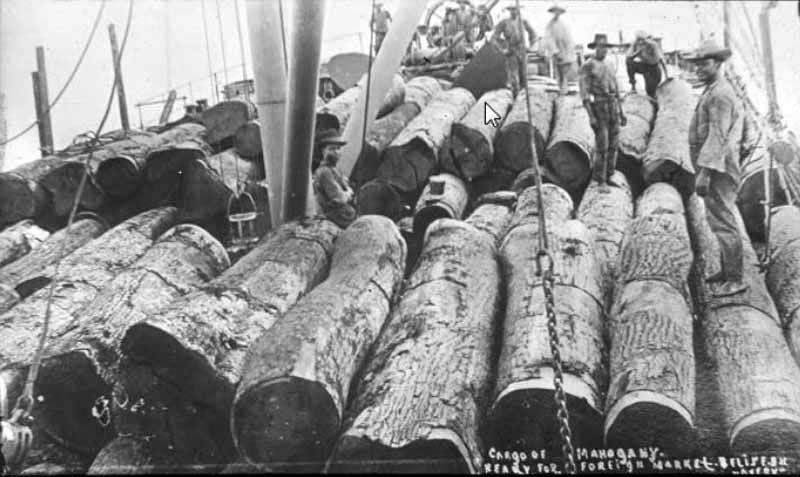Peini Holds the Line: From Logwood Dyes to Modern Kingship, Why Belize’s Garifuna Heritage Must Be Defended
- Sylvian Hyde

- Sep 24
- 5 min read

Independence Day Under Pressure
September 21st is meant to be a day of joy in Belize: a day of flags, drumming, and the dignity of freedom. But this year, in Punta Gorda, known in Garifuna as Peini, the mood was pierced by unwelcome intruders.
Local news reported Guatemalan naval vessels prowling near the Sarstoon River, maneuvering aggressively and attempting to block Belizean patrols. Belize’s Coast Guard commandant, Rear Admiral Elton Bennett, denied that Guatemalan ships entered Punta Gorda’s harbor but confirmed an encounter at the Sarstoon’s mouth before Belize’s forces continued to their Forward Operating Base.

It was no accident that this occurred on Independence Day. It was a message. And for those of us rooted in Peini, that message was deeply personal.
Peini: The Garifuna Heart

Punta Gorda is more than a frontier town. It is a Garifuna stronghold, a place where our language, drums, cassava bread, and paranda melodies are not museum relics but living practices. UNESCO has recognized Garifuna culture as Intangible Cultural Heritage of Humanity, but here in southern Belize, it is heritage that breathes.

For me, this story is family. My great-grandmother, Lucille Melendrez, was a Garifuna matriarch and community leader in Punta Gorda. Her legacy is honored in the very streets: Lucille Melendrez Boulevard runs through the town she helped shape. Some remember her as a pioneer in Garifuna women’s political organizing, a voice for dignity in an era when both women and Indigenous people were too often silenced. Her leadership is the soil from which I grow.

When Guatemalan vessels intrude upon Peini’s waters, they are not simply testing Belizean sovereignty. They are threatening communities like mine, living lineages that tie land, sea, and culture together.
The Long Frontier: Mosquito Kings and British Protection
These confrontations at the Sarstoon echo centuries of struggle over this Caribbean frontier.
In the 17th through 19th centuries, Britain defended two Afro-Indigenous peoples along this coast: the Miskito (Mosquito) kingdom and the Garifuna. The Mosquito kings ruled from Nicaragua and Honduras with British support, resisting Spanish attempts to dominate the coast. When the Garifuna were exiled from St. Vincent in 1797 and resettled along Central America, their communities overlapped with this same frontier.

Together, the Miskito and Garifuna formed a buffer zone Britain pledged to protect. Peini became the northern edge of that long frontier.
That history explains why, even at independence in 1981, the United Nations called on Britain to continue defending Belize, and why British troops remained in-country until 1994. Belize was never just land to be contested; it was a people to be safeguarded.
The Colonial Economy: Logwood and Mahogany
Belize has always been part of fashion’s story, though rarely acknowledged.
In the 1600s and 1700s, its forests yielded logwood, a tree that produced deep blacks, purples, and blues used to dye European textiles. Before synthetic dyes, logwood was one of the only ways to achieve a true, colorfast black. From aristocratic robes to military uniforms, from clerical vestments to luxury fabrics, logwood from Belize literally dyed the world in color.
By the 1800s, mahogany replaced logwood as the primary export. Hard, lustrous, and richly hued, it became the favored wood for luxury furniture in Europe, filling drawing rooms and palaces across the Atlantic.

Who worked these forests? At first, enslaved Africans. But after emancipation in 1834, free people of color, including the newly arrived Garifuna, entered the industry. Garifuna men labored seasonally in mahogany camps, hauling logs through rivers and swamps. Women provisioned the works, selling cassava, fish, and goods.
The Garifuna were not outsiders to Belize’s economic history. They were participants in the very industries that tied Belize to global luxury. If Europe’s wealth was once dressed in Belizean dyes and furnished in Belizean mahogany, it was Garifuna hands that helped cut, haul, and sustain that trade.
Sovereignty Today: Sarstoon and the ICJ
Guatemala’s territorial claim over Belize is now before the International Court of Justice (ICJ). Both countries have pledged to wait for a ruling. But on the water, patience is tested. Each intrusion at the Sarstoon forces Belize’s small but disciplined forces to hold the line.

Belize’s answer has been consistent:
Maintain daily patrols.
Keep the Forward Operating Base at the river’s mouth.
Document every encounter.
Secure support from allies, CARICOM and the Commonwealth have both condemned Guatemalan incursions and affirmed Belize’s sovereignty.

For those of us in Peini, these are not diplomatic abstractions. The Sarstoon is not faraway news; it is the next river south.
Why Fashion Must Speak
Some may ask: why does a fashion designer, a founder of a luxury brand, write about military incursions and sovereignty? Because fashion is never neutral.
For centuries, fashion houses have drawn inspiration from marginalized cultures, from patterns, colors, and motifs, while doing little to defend those same cultures when threatened. HYDE GROUP was founded to reverse that. We do not appropriate; we carry. We do not borrow beauty; we embody memory.

Fashion has also drawn endlessly from war. Tailoring itself owes much to military uniforms. Trench coats, bomber jackets, khaki fatigues, pea coats, and combat boots all became staples of global fashion after being born in battle. We glorify the aesthetic aftermath of conflict, but rarely do we stop to ask: what would it mean for fashion to play a role in preventing war?
Belize once fueled fashion by supplying raw commodities, logwood dyes, mahogany timber. That was an age of extraction. Today, Garifuna culture offers not raw material but creative leadership, heritage, and story. The difference is authorship.
If fashion can celebrate the look of wars long past, it should also have the courage to help prevent the conflicts of the present. Fashion, if it is to have integrity, must not only celebrate culture but also protect it.
Kingship, Continuity, Resistance
In my book, The Divine Indictment: Whiteness vs. Humanity, I declared myself His Majesty Paramount King Sylvian J. Hyde I. Some dismiss this as symbolic, but I embrace it as a declaration of moral authority: sovereignty is not granted by states alone but claimed through duty, heritage, and defense of one’s people.

Belize’s independence, Peini’s survival, and Garifuna continuity are not separate stories, they are one. Kingship, as I claim it, is not about crowns or palaces. It is about standing forward when culture, dignity, and memory are threatened.
On Independence Day, as Guatemalan engines churned the Sarstoon, Belize’s answer must still echo:
We remain. We belong. We will not yield. Fashion will not only celebrate beauty; it will defend the soul of heritage.
Sidebar: The Long Frontier
1600s - 1800s: Mosquito Coast kingdom, backed by Britain, resists Spain.
1797: Garifuna exiled to Roatán, spread into Belize.
1600s - 1700s: Belize exports logwood dyes →
deep black and purple for European textiles.
1800s - 1900s: Mahogany exports → European luxury furniture. Garifuna labor in forestry.
1981: Belize gains independence; UN calls on Britain to defend it.
1994: British troops withdraw. Belize stands guard alone.
2025: Belize confronts Guatemalan aggression on Independence Day.
Sources & References:
7News Belize - Guatemalan Navy Aggression on Independence Day (2025)
Breaking Belize News - Sarstoon Encounters Between BDF and Guatemalan Forces
CARICOM Statement on Guatemalan Aggression in the Sarstoonhttps://caricom.org
The Commonwealth - Secretary-General Condemns Guatemalan Incursions, Reaffirms Belize’s Sovereignty
International Court of Justice - Case Concerning Guatemala’s Claim over Belize https://www.icj-cij.org
UNESCO - Garifuna Language, Dance and Music Recognized as Intangible Cultural Heritage of Humanity https://ich.unesco.org/en/RL/garifuna-language-dance-and-music-00001
Government of Belize - Inauguration of Rehabilitated Lucille Melendrez Street in Punta Gorda
https://www.facebook.com/GOBPressOffice/posts/1260778720624295
Sylvian Hyde - The Divine Indictment: Whiteness vs. Humanity https://books.google.com/books/about/The_Divine_Indictment_Whiteness_V_Humani.html?id=tIcd0QEACAAJ
Bolland, O. Nigel - Colonialism and Resistance in Belize: Essays in Historical Sociology
(Key reference for Garifuna labor in mahogany/logwood industries)
Shoman, Assad - A History of Belize in 13 Chapters
(Background on British defense commitments, logwood & mahogany economies)
By His Majesty Paramount King Sylvian J. Hyde I
Author of The Divine Indictment: Whiteness vs. Humanity | Founder of HYDE GROUP





Comments